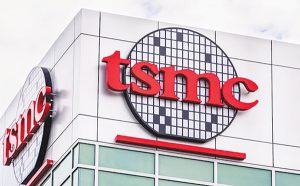It takes a lot of guts to spend $42 billion in a single year on factories and equipment just as global interest rates are rising and economies are slowing.
Even Taiwan Semiconductor Manufacturing Co’s (TSMC) investors had started to doubt the world’s biggest chipmaker.
But the company’s confidence was on display again when Chairman Mark Liu told shareholders it expects revenue to climb at least 30% this year, two months after forecasting a figure in the mid-to-high 20s. TSMC has a good track record of hitting its targets, so it wouldn’t have tweaked those numbers if it wasn’t sure it could get there.
And this optimism isn’t short term. With a customer list that includes Apple Inc, Qualcomm Inc, Intel Corp, Nvidia Corp and Advanced Micro Devices Inc, the company has greater insight to both short and
long-term semiconductor demand than anyone else on the planet. That’s why it raised its capex budget by almost 40% from the $30 billion it spent last year. In fact, as Liu and Chief Executive Officer CC Wei outlined at the annual general meeting, its expansion is for the long-term while economic slowdowns are temporary.
Underpinning this self-belief is continued demand for ever-faster chips that drive not only computers and games consoles, but servers and communications base stations. Collectively, this category of devices is called high-performance computing and is likely to drive the technology hardware industry over the next few years even as growth in TSMC’s single biggest category, smartphones, slows. Rising interest rates and economic recessions are unlikely to dent this trajectory as more of the world becomes digitised. Yet the past few years, which included work-from-home inspired electronics purchases and a global chip shortage, have made TSMC not just a hero but a target.
Governments around the world want a piece of the action. The US lobbied hard to get the Hsinchu-based company to set up shop on its shores, and it relented with a new factory due to commence operations in Arizona within the next two years at a long-term cost of around $10 billion. There’s a high chance more factories will follow.
Japan, too, was successful in luring TSMC to set up a joint venture with Sony Corp. Europe also has its hand up, though Liu downplayed any hopes by saying no factory was imminent there. Then there’s China. The only other place outside Taiwan that TSMC operates factories of any note is in Shanghai and Nanjing.
—Bloomberg
 The Gulf Time Newspaper One of the finest business newspapers in the UAE brought to you by our professional writers and editors.
The Gulf Time Newspaper One of the finest business newspapers in the UAE brought to you by our professional writers and editors.
